Procurement Performance Management: How to Measure Success

In today’s fast-paced business world, managing procurement performance is no longer optional it is essential. Procurement performance management (PPM) means tracking how well your procurement team buys goods and services to support your company’s goals. According to Deloitte, effective procurement can reduce costs by up to 15% while improving supplier relationships and operational efficiency. How do you know when your procurement process is actually winning? That is the million-dollar question.
In this blog, we will break down how to measure procurement performance clearly and effectively. We will focus on the key metrics, tools, and best practices that can help your team make smarter decisions and drive real business value. Gartner highlights that organizations using data-driven procurement strategies outperform their peers by 20% in cost savings and supplier performance.
What Is Procurement Performance Management?
Procurement performance management is the process of monitoring and evaluating how effectively your procurement team sources, negotiates, and manages suppliers and contracts. It involves setting goals, measuring key indicators, and using data to improve procurement activities. The ultimate aim is to make sure procurement supports the overall business strategy by controlling costs, managing risks, and enhancing supplier relationships.
What Is the Purpose of Procurement Performance Management?
The main purpose of procurement performance management is to ensure procurement delivers maximum value to the business. This means tracking and improving every step in the procurement process to help the company save money, reduce risks, and operate efficiently. Specifically, procurement performance management aims to:
- Ensure purchases are cost-effective and within budget: Avoid overspending by negotiating better deals and choosing the right suppliers. This helps maximize the value of every dollar spent while maintaining quality and meeting business needs. Careful budgeting and spending control also improve overall financial health and profitability.
- Improve supplier quality and reliability: Monitor supplier performance to maintain high standards and avoid disruptions. Consistent quality from suppliers supports long-term business stability and customer satisfaction. Building strong supplier partnerships can also drive innovation and continuous improvement.
- Reduce delays and inefficiencies in purchasing: Streamline processes so goods and services arrive on time without bottlenecks. Efficient procurement accelerates project timelines and reduces operational risks. Faster cycle times enhance customer satisfaction and keep the business competitive.
- Align procurement activities with business goals: Make sure procurement supports overall company objectives and strategies. This alignment ensures procurement contributes directly to organizational growth and success. Strategic procurement also helps prioritize initiatives that offer the highest business impact.
- Minimize risks related to suppliers and contracts: Identify and manage risks like supply chain disruptions, contract non-compliance, or poor supplier practices. Effective risk management protects against financial losses and reputational damage. Proactive risk mitigation strengthens business continuity and resilience.
- Enhance transparency and accountability: Provide clear visibility into procurement activities for better decision-making across teams. Transparency fosters trust among stakeholders and encourages responsible procurement behaviour. It strengthens oversight to catch and prevent any dishonest or non-compliant behaviour.
Drive continuous improvement: Use data and feedback to refine procurement strategies and processes regularly. A culture of continuous improvement promotes innovation and adaptability. This mindset helps procurement stay ahead in a rapidly changing market.
- Strengthen collaboration: Foster better communication between procurement, finance, operations, and suppliers for smoother workflows. Collaboration leads to shared goals and improved operational efficiency. Cross-functional teamwork also reduces misunderstandings and accelerates problem-solving.
- Increase agility: Enable procurement to quickly adapt to market changes and new business needs. Agility ensures the organization can respond promptly to emerging opportunities and challenges. Flexible procurement strategies can help capitalize on competitive advantages.
- Ensure compliance with regulations: Maintain adherence to industry standards, legal requirements, and ethical practices. Staying compliant preserves trust in the company while preventing costly legal challenges. Staying compliant also builds credibility with customers, partners, and regulators.
By clearly defining these purposes, companies can build a procurement function that is proactive, strategic, and aligned with long-term success. When procurement performance is managed effectively, it becomes a powerful driver for competitive advantage and operational excellence.
Measuring procurement performance helps companies spot problems early, avoid costly mistakes, and make smart, data-driven improvements. Ultimately, it builds a stronger procurement function that supports the company’s growth and resilience in a competitive market.
Benefits of Procurement Performance Management
When done right, procurement performance management offers big benefits that go beyond just saving money. It creates a strong foundation for business growth, operational excellence, and competitive advantage. Here are some of the key benefits:
- Cost savings: Find ways to spend less without sacrificing quality. Smart procurement helps maximize budget impact and supports overall profitability by identifying cost reduction opportunities and negotiating better deals. Consistent cost control also enables reinvestment into other critical areas of the business.
- Better supplier relationships: Track supplier performance and build partnerships. Strong supplier relationships lead to improved service levels, access to innovation, faster issue resolution, and reduced supply risks. Collaborating closely with suppliers can unlock new efficiencies and competitive advantages.
- Increased efficiency: Speed up procurement cycles and reduce wasted effort. Streamlined processes free up time for strategic initiatives, accelerate project delivery, and improve overall team productivity. Efficient procurement operations also enhance responsiveness to market demands.
- Greater transparency: Clear visibility into procurement activities and spending. Transparency promotes accountability, reduces maverick spending, and helps stakeholders make informed purchasing decisions. It enhances audit preparedness while maintaining strict compliance with legal requirements.
Stronger compliance: Ensure everyone follows contracts and policies. This reduces legal risks, protects against fraud, and fosters ethical business practices. Robust compliance frameworks build trust with partners and customers alike.
- Improved risk management: Proactively identify and mitigate risks related to suppliers, contracts, and market fluctuations. This helps avoid supply chain disruptions and financial losses. Effective risk mitigation strengthens business continuity and resilience.
- Enhanced data-driven decisions: Access to accurate procurement data allows leaders to analyse trends, forecast needs, and optimize purchasing strategies for better outcomes. Data transparency encourages smarter budgeting and resource allocation.
- Better alignment with business goals: Procurement performance management ensures procurement supports the broader objectives of the company, driving value across departments. Strategic alignment improves cross-functional collaboration and organizational success.
- Scalability: A well-managed procurement process can easily scale as the business grows, ensuring consistent performance even during rapid expansion. Scalable procurement systems reduce growing pains and support sustainable growth.
- Sustainability and corporate responsibility: Modern procurement practices can include environmental and social criteria, helping companies meet sustainability goals and improve brand reputation. Responsible procurement strengthens community relations and attracts socially conscious customers.
By leveraging these benefits, organizations build a resilient procurement function that not only controls costs but also drives innovation and strategic value. In the long run, procurement performance management supports stronger business results and a healthier bottom line. It also fosters a culture of continuous improvement, preparing companies to meet future challenges with confidence and agility. Ultimately, it positions procurement as a key strategic partner in driving overall organizational success. This creates a long-lasting competitive edge that ensures the company’s growth, profitability, and sustainability in the future.
Key Metrics to Track for Procurement Success
Measuring procurement performance boils down to tracking a few important numbers. Here are the key metrics every procurement manager should watch closely:
- Cost Savings and Cost Avoidance
- Cost savings means the actual money you have saved by negotiating better prices or choosing cheaper suppliers.
- Cost avoidance is the money you save by preventing price increases or unnecessary purchases.
Both show how well your team controls spending and contributes directly to the company’s bottom line. Consistently tracking these helps identify opportunities for continuous financial improvement and supports strategic budgeting decisions.
- Supplier Performance
Supplier reliability is critical. Track metrics like:
- On-time delivery rate: Are suppliers delivering on schedule?
- Quality compliance: Are the products/services meeting your standards?
- Supplier responsiveness: How fast do they respond to issues?
Good suppliers keep your operations smooth and reduce costly disruptions, ensuring your production or service delivery stays on track. Monitoring these metrics also helps build stronger supplier relationships through constructive feedback and collaboration.
- Purchase Order Cycle Time
This metric tracks how long it takes from requesting a purchase to completing it. Faster cycle times mean your procurement team is working efficiently and helping the business move quickly. Reducing cycle time also improves cash flow management and customer satisfaction. It further enables the organization to respond promptly to changing market demands and internal needs.
- Contract Compliance
Are purchases following approved contracts? Measuring compliance helps avoid rogue spending and legal risks. It also ensures that negotiated terms are being honoured, which protects the company from unexpected costs or liabilities. Regular audits of contract adherence foster discipline and encourage procurement teams to follow best practices consistently.
- Procurement ROI (Return on Investment)
This shows how much value your procurement activities bring compared to the costs involved. A positive ROI means procurement adds real business value. Tracking ROI helps justify procurement investments and highlights areas needing attention or improvement. It also supports data-driven decisions about future procurement strategies and resource allocation.
Challenges of Procurement Performance Management
Measuring procurement performance is not without its challenges. Many organizations struggle to get accurate, actionable insights due to various obstacles. Here are some common challenges and practical ways to tackle them:
- Data accuracy: Poor or incomplete data leads to unreliable insights and bad decisions. Investing in robust procurement software and regularly training your team on data entry and management is essential to maintain data quality.
- Lack of standard metrics: Without agreed-upon definitions and measurement methods, comparing performance across teams or periods becomes confusing. Establishing clear, standardized metrics organization-wide ensures everyone measures and reports consistently.
- Resistance to change: Procurement teams and stakeholders may be hesitant to adopt new tools or processes. Clear communication about the benefits, along with involving key players early in the process, helps build buy-in and reduces pushback.
- Overcomplicating reports: Lengthy or overly technical reports overwhelm users and dilute focus. Simplify reports by concentrating on key metrics that directly impact business goals to make them more effective and actionable.
- Siloed departments: When procurement operates in isolation from finance, operations, and suppliers, critical information can be lost or misunderstood. Encouraging cross-functional collaboration improves data sharing and aligns performance goals.
- Limited technology adoption: Many organizations still rely on spreadsheets or outdated systems, which limit real-time tracking and automation. Upgrading to modern procurement management tools can enhance visibility and efficiency.
- Inconsistent supplier data: Supplier information can be scattered and outdated, making performance measurement difficult. Implementing centralized supplier management systems ensures data accuracy and better supplier relationship management.
- Changing market conditions: External factors like supply chain disruptions, price volatility, and regulatory changes can impact procurement performance unpredictably. Flexible measurement frameworks and risk mitigation strategies help navigate these uncertainties.
- Lack of skilled personnel: Measuring and analyzing procurement data requires specific skills that some teams may lack. Providing ongoing training and possibly hiring data analysts or procurement specialists can fill this gap.
Addressing these challenges head-on improves procurement performance management, enabling organizations to make smarter decisions, optimize resources, and drive lasting business value.
How to Measure Procurement Performance Effectively
Knowing the metrics is one thing; measuring them well is another. Here’s how to get it right:
Use the Right Tools
Manual tracking won’t cut it anymore. You need procurement performance management software that can automate data collection, reporting, and analysis. Since you are familiar with Apps365’s suite, tools like Performance Management 365 and Contract Management 365 can help:
- Collect real-time procurement data
- Generate customizable reports
- Track supplier and contract compliance
- Monitor cost savings and ROI
These tools also provide dashboards and alerts that make it easier to spot trends and issues quickly, allowing proactive management.
Set Clear Goals and Benchmarks
Define what success looks like for your procurement team. Set targets for each metric based on past data and industry standards. For example, aim for 95% on-time delivery or a 10% cost savings target. Regularly revisiting and adjusting these benchmarks ensures they stay relevant as business needs evolve.
Regular Reporting and Review
Make procurement performance reporting a regular habit. Weekly or monthly reviews help identify issues early and keep your team accountable. Sharing results transparently across departments encourages continuous improvement and alignment with business goals.
Engage Stakeholders
Procurement does not work in isolation. Collaborate with finance, operations, and suppliers to get a complete picture and improve processes together. Involving stakeholders in goal setting and performance reviews fosters ownership and helps break down silos.
Conclusion
Procurement performance management is about more than just numbers it is about driving your business forward by making smarter purchasing decisions. By measuring success using the right metrics, tools, and practices, you can boost savings, improve supplier relationships, and support your company’s goals.
If you want a proven solution to help measure and improve your procurement performance, consider exploring Performance Management 365. It integrates seamlessly with Microsoft 365 and provides powerful insights to help you win at procurement.
Start measuring procurement success today and see the difference it makes tomorrow.
Frequently Asked Questions
What is procurement performance management, and why is it important?
Procurement performance management is the process of monitoring and evaluating how effectively your procurement team sources, negotiates, and manages suppliers and contracts. It is important because it helps control costs, manage risks, improve supplier relationships, and align procurement activities with business goals.
What are the key metrics to track for measuring procurement success?
Some key metrics include cost savings and cost avoidance, supplier performance (on-time delivery, quality compliance, responsiveness), purchase order cycle time, contract compliance, and procurement ROI. Tracking these metrics helps identify areas for improvement and optimize procurement processes.
What challenges do organizations face in procurement performance management?
Some key metrics include cost savings and cost avoidance, supplier performance (on-time delivery, quality compliance, responsiveness), purchase order cycle time, contract compliancave, and procurement ROI. Tracking these metrics helps identify areas for improvement and optimize procurement processes.
How can technology help improve procurement performance management?
Modern procurement software like Performance Management 365 automate data collection, reporting, and analysis. These tools provide real-time insights, customizable reports, and compliance tracking that support proactive decision-making and efficiency.
How often should procurement performance be reviewed?
Regular reporting and review should be a consistent practice, ideally on a weekly or monthly basis. Frequent reviews help catch issues early, maintain accountability, and align procurement efforts with evolving business goals.




























